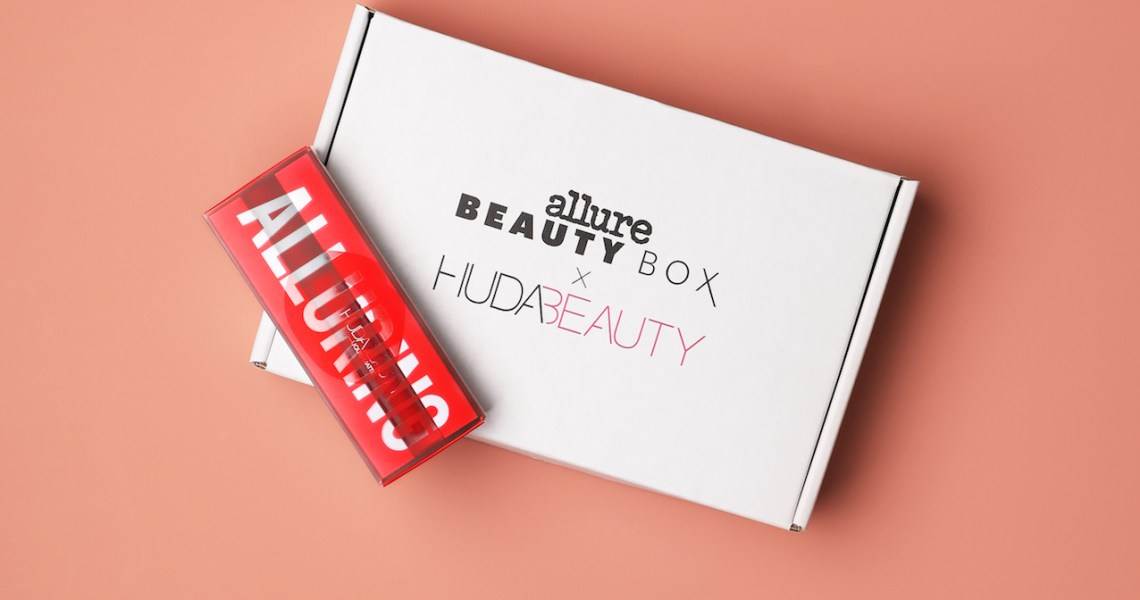The beauty box subscription craze is past its peak in the U.S., but Allure’s version is seeing strong growth.
Allure, which is owned by Condé Nast, declined to share current figures around its beauty box subscribers, but in 2016, it reportedly had 30,000. Membership is at an all-time high, up 80% year over year in 2018, said Jill Friedson, vp of marketing for Condé Nast Beauty Collection. In 2019, membership experienced a 99% year-over-year growth in the first quarter. Allure’s Beauty Box revenue is up 90% year over year from 2017 to 2018.
“When we look at how we have been able to diversify our revenue, the beauty box is one of the success stories across the whole company,” said Allure editor-in-chief Michelle Lee. “Now in its third year, we are looking at the boxes not as a side project but as a pillar of our business.”
For July, Allure’s monthly $15 box is a co-curation with Huda Beauty founder Huda Kattan, as part of a quarterly series of co-curated boxes with celebrities and brands. Actress Zoe Kravitz and Kat Von D makeup have been participants. These co-curated boxes, which began in June 2018, have become a key conversion driver for the beauty boxes, providing a 400% higher conversion than other months, said Friedson. The July box with Kattan will include six products, including an exclusive Huda Beauty liquid lipstick, as well as deluxe sample products from K-beauty brand Tony Moly and hair-care brand Ouai.
Kattan and her team personally selected the products included in the box, and Allure editors collaborated with Huda Beauty on the orange-red shade of the exclusive lipstick. (The shade is called “Alluring.”) Neither Kattan nor her brand was paid to participate, and Allure — like most subscriptions boxes — receives products for free from brands.
“Beauty boxes are such an amazing and affordable way to sample products to new potential consumers and this is a big sampling initiative for us specifically in the US market,” said Kattan. “I wanted everything in the box to feel authentically chosen by me.”
When Allure launched its subscription box in 2012, it was through an e-commerce partnership with BeautyBar called Allure Sample Society. In 2015, it brought in-house most involved operations, including customer data, research, customer service and brand relations. Warehouse fulfillment is the only outsourced entity. Currently, 1 out of 6 new beauty box subscribers becomes a subscriber of the publication, and 74% of subscribers purchased a product after receiving it in a box, said Friedson. Allure has 5.6 million magazine subscribers, according to its 2018 media kit.
Ad position: web_incontent_pos1
“If you sign up for the box, you’re attaching yourself to the [overall] Allure brand,” she said.
The beauty subscription category has been tapped out, with venture capital deals in all subscription categories peaking at 70 in 2016 and falling to 50 investments by 2018, according to investment platform Pitchbook. Many subscription boxes have shut down or been forced to change their strategies as investors have shifted focus away from the offering. Birchbox’s original game plan was to overtake Sephora as a beauty retailer, but it has since closed its New York City store and partnered with Walgreens on shop-in-shops. Memebox, meanwhile, hit a wall in growth in the U.S. due to crowding in the K-beauty space and pivoted its business from e-commerce to affiliate links before developing its own private-label lines. Others have managed to grow, like FabFitFun, which passed 1 million subscribers and $200 million in revenue in November 2018, reportedly due to a focus on live programming, and Ipsy, which has diversified its business through consumer events.
Co-curation boxes like the one with Huda Kattan have been instrumental to the Allure box’s continued growth, said Friedson, as it allows the business to reach new audiences. Kattan herself represents a trifecta for Allure: not only is she a bona fide makeup artist, but she’s also a brand founder and social media influencer with over 37.6 million Instagram followers. To put that in perspective, that’s only 6.4 million fewer people than the entire subscription base for Condé Nast’s 19 print publications. On Tuesday morning, Kattan unveiled the July box to her followers during her own livestream on Instagram.
“[Kattan’s followers] are a vibrant, like-minded audience who may not know us. That’s a prime way to think about customer acquisition,” said Friedson. “We have gotten better at our [brand] procurement strategy, watching the brands that have the highest engagement on the website and putting that into the box.”
As Allure’s box business continues to grow and the magazine industry continues to get harder, Allure is focusing on how it can build a community around its beauty boxes. Lee noted that the beauty industry is built on recommendations and the desire to share information. She wants Allure to facilitate those conversations while also providing a valuable service to its readership and box subscribers. Currently, Allure is exploring the possibility of hosting livestreams on social media, a live Q&A event or in-person masterclasses around its boxes, she said.
Ad position: web_incontent_pos2
“I want [box] subscribers to be a fan of the whole brand,” Lee said. “Everything has to live within the ecosystem: Products in the box are in the magazine, for example, and we do reviews and unboxing videos on IGTV. It’s not about building a separate community.”




